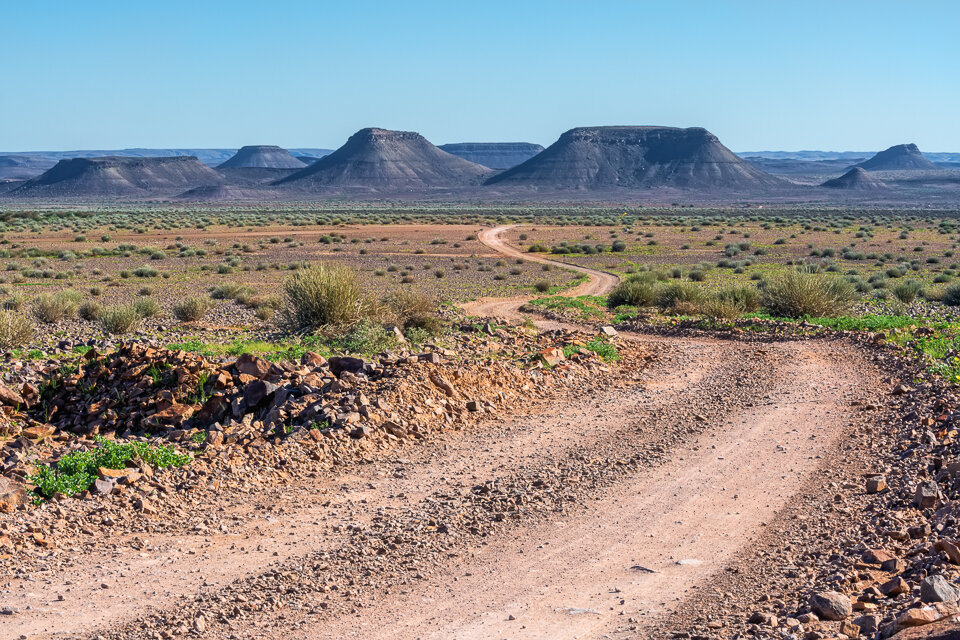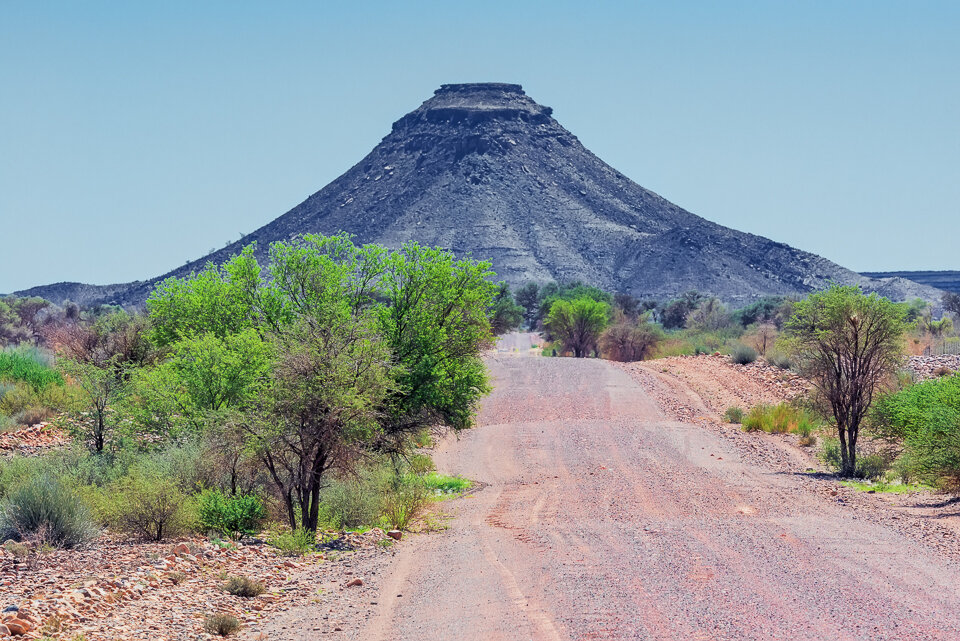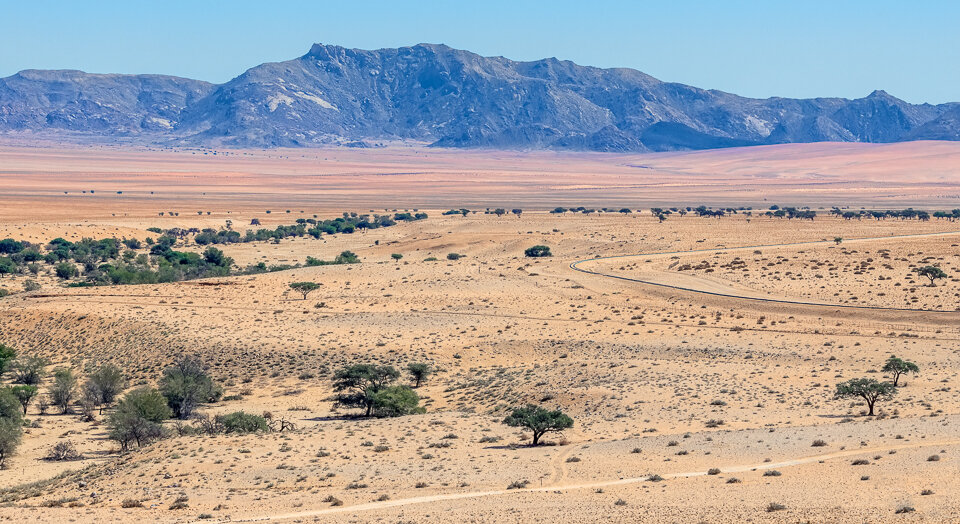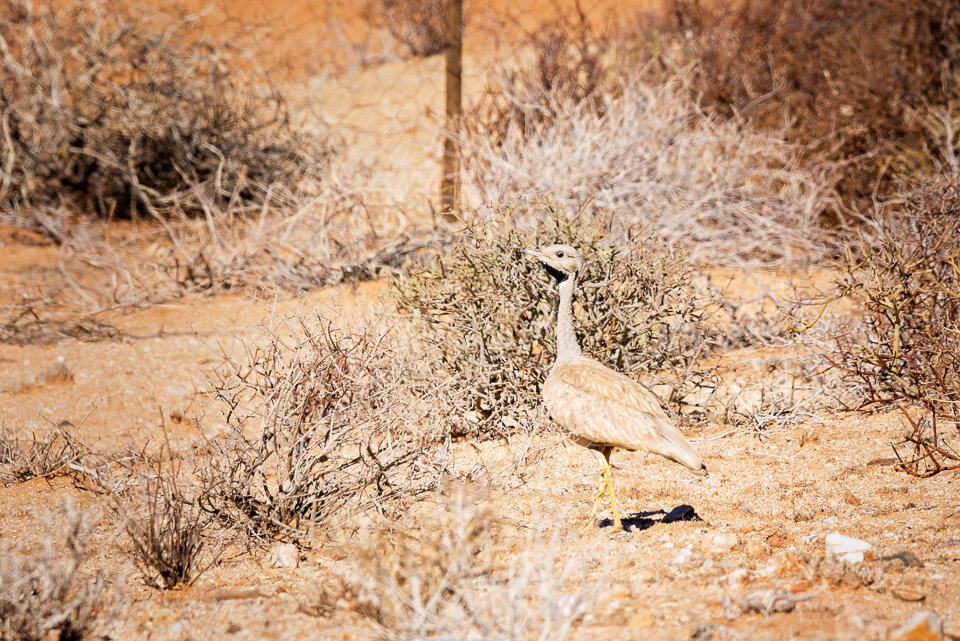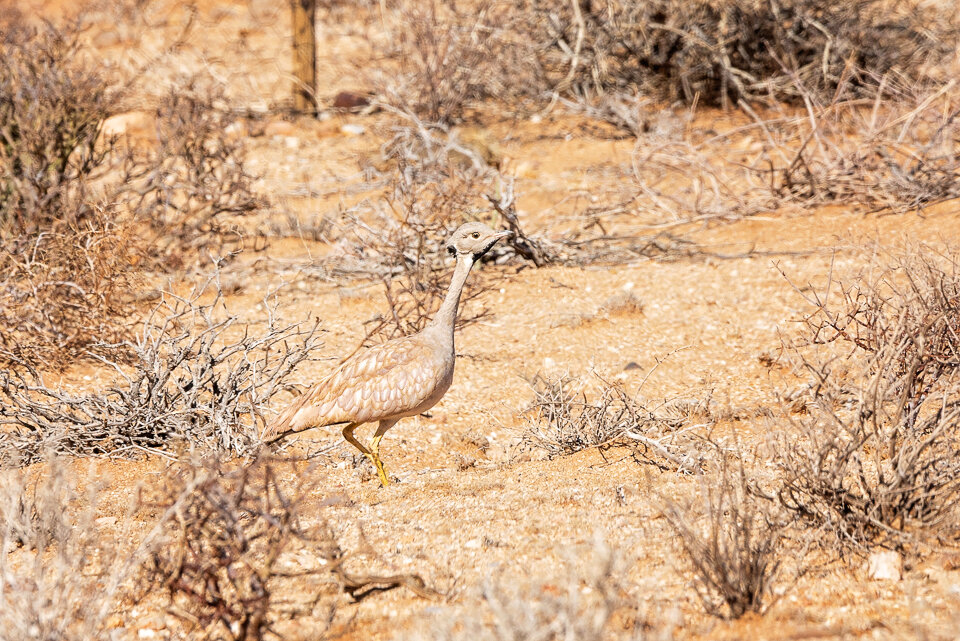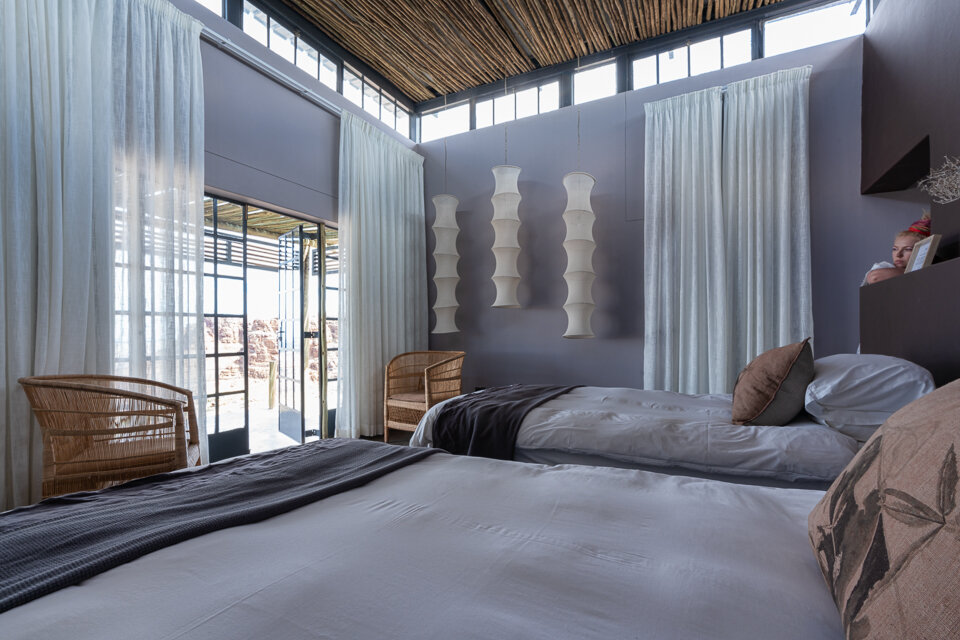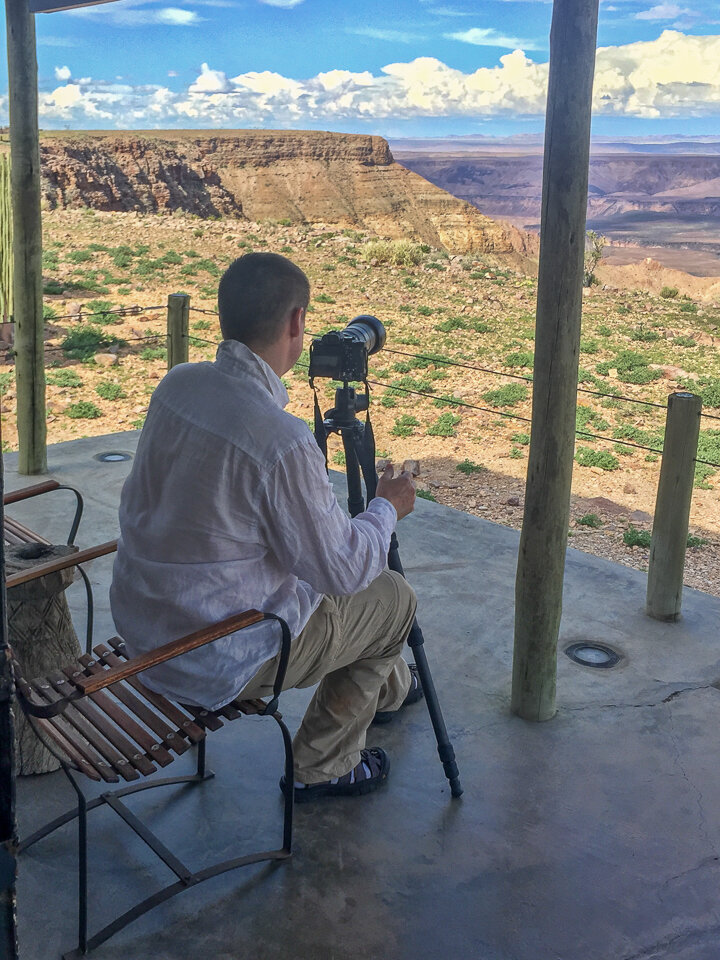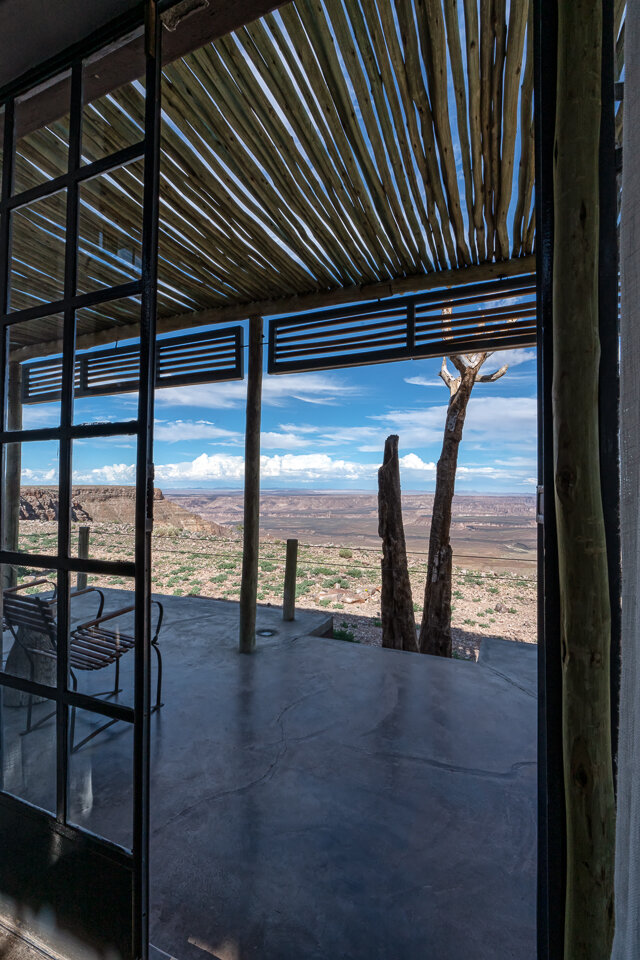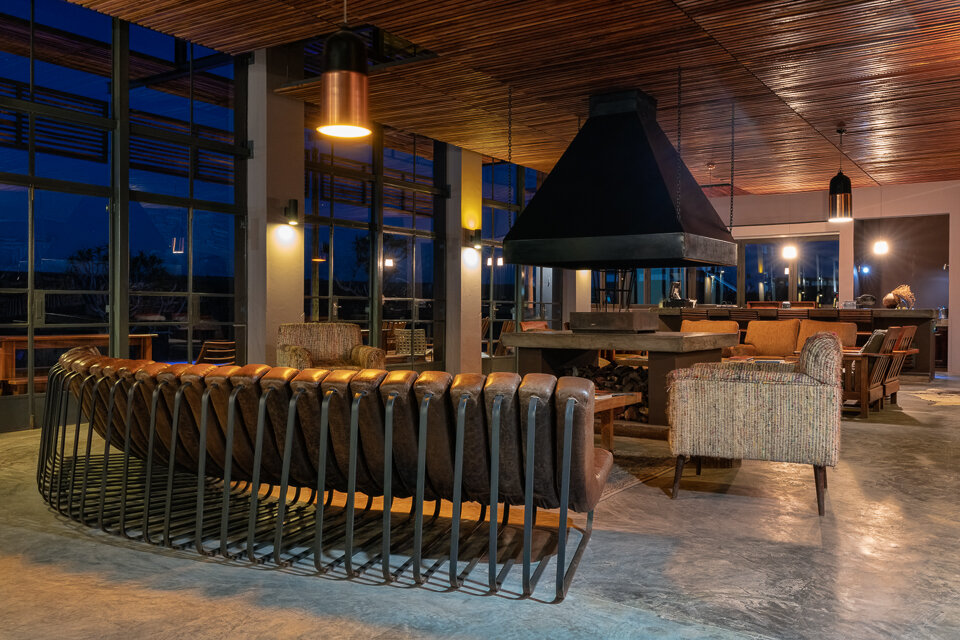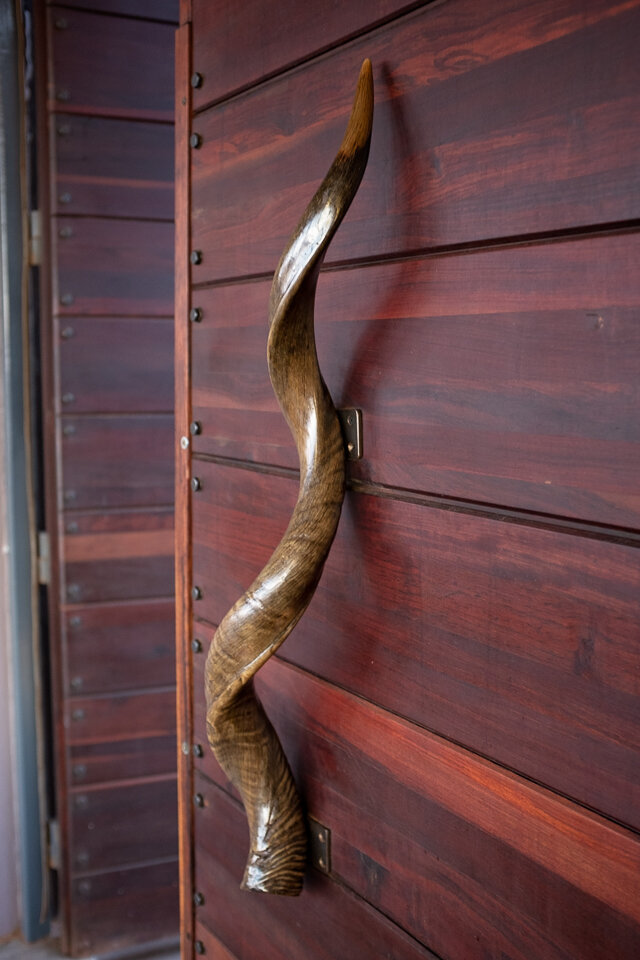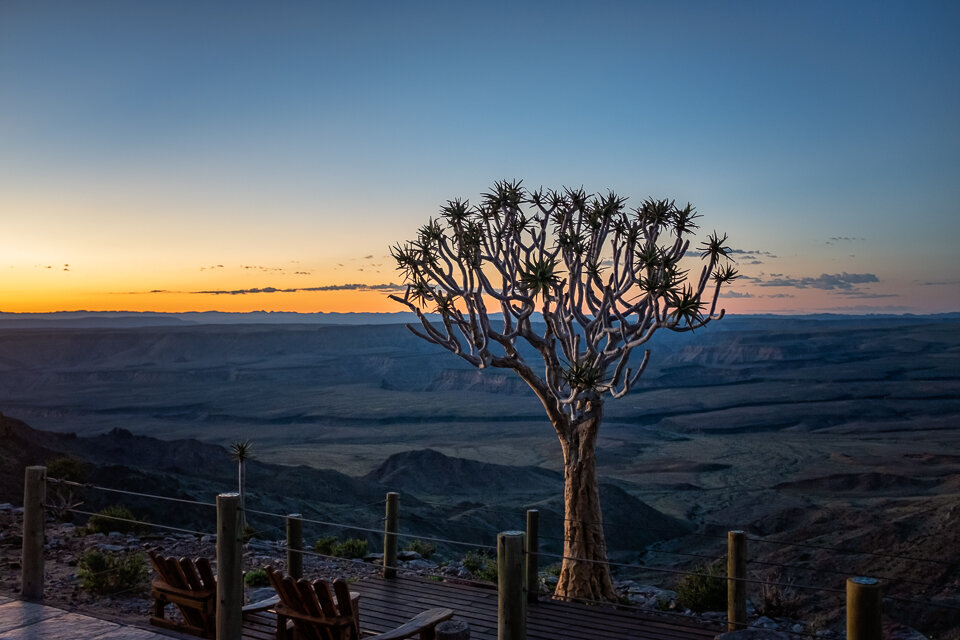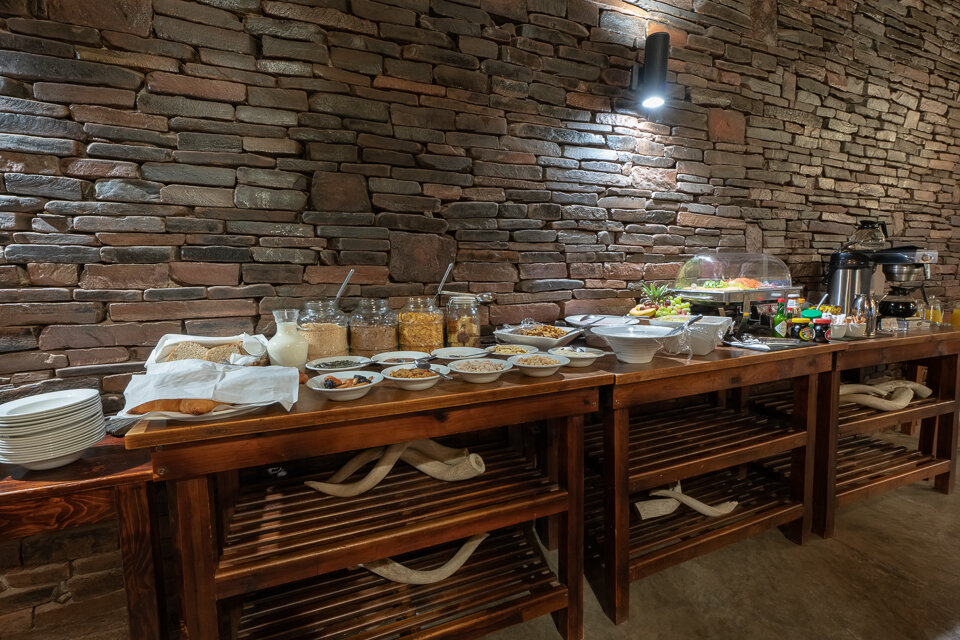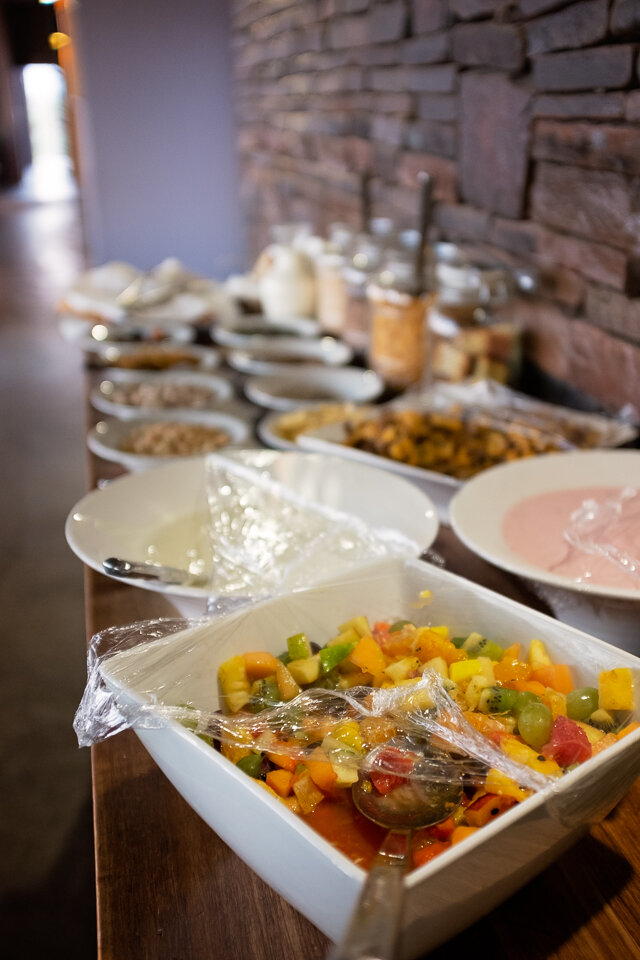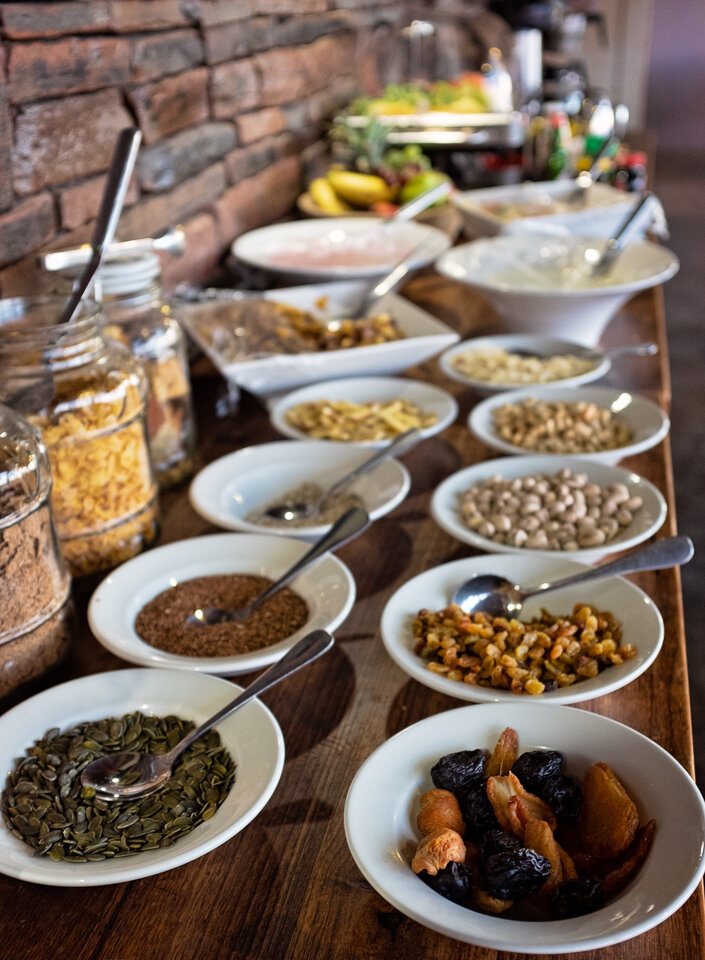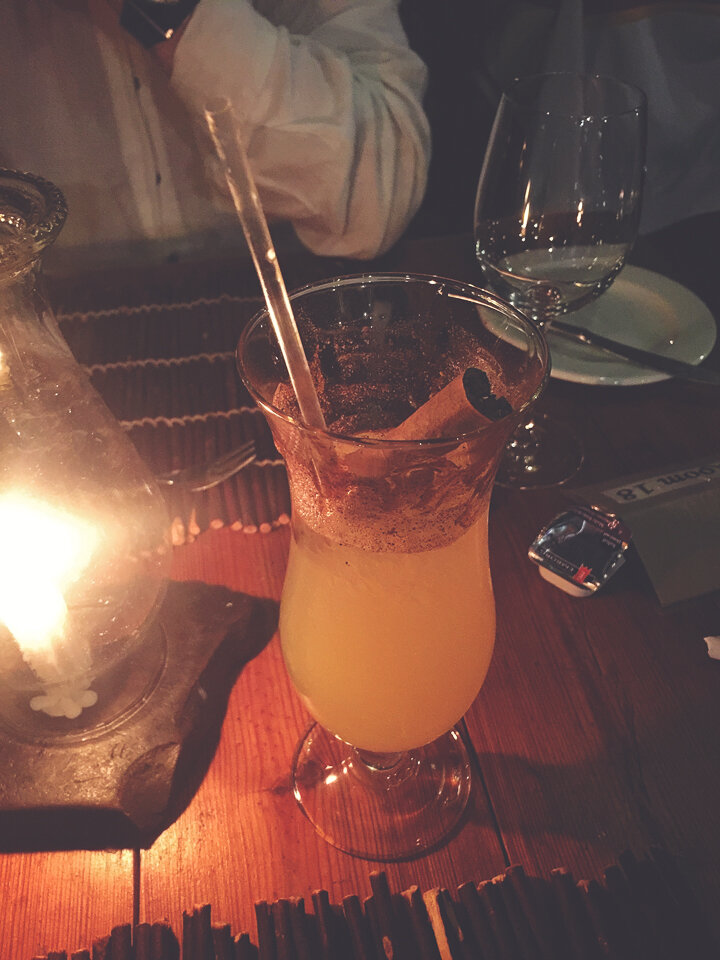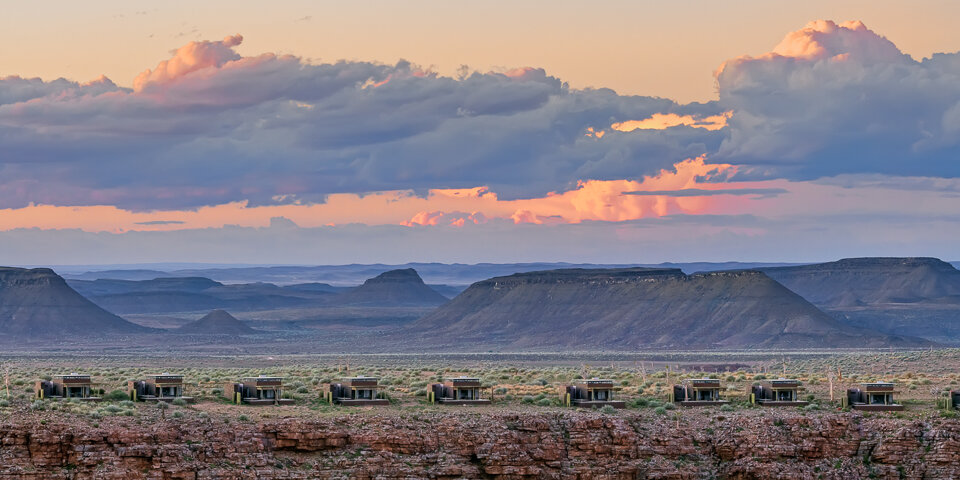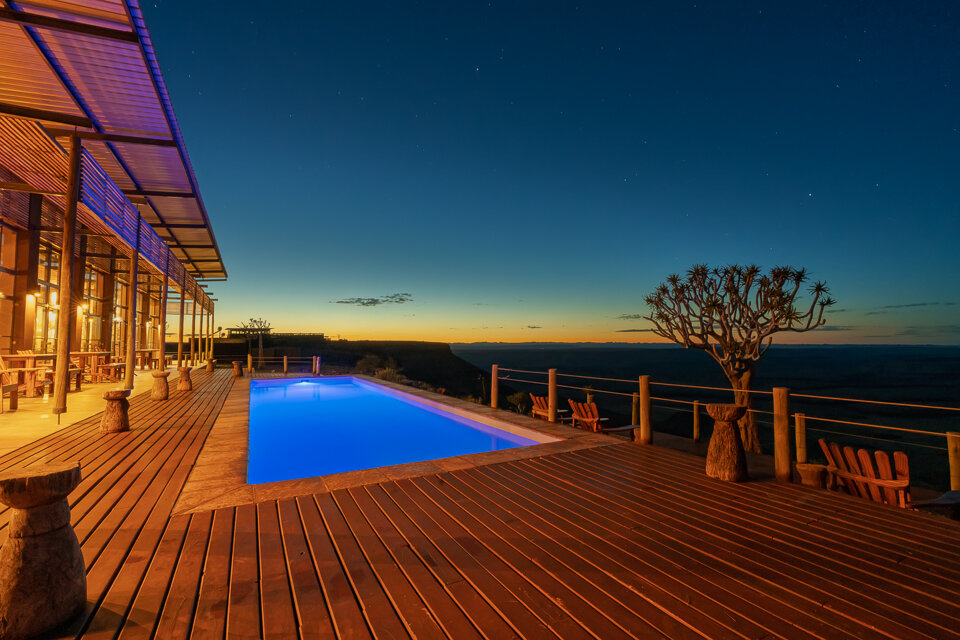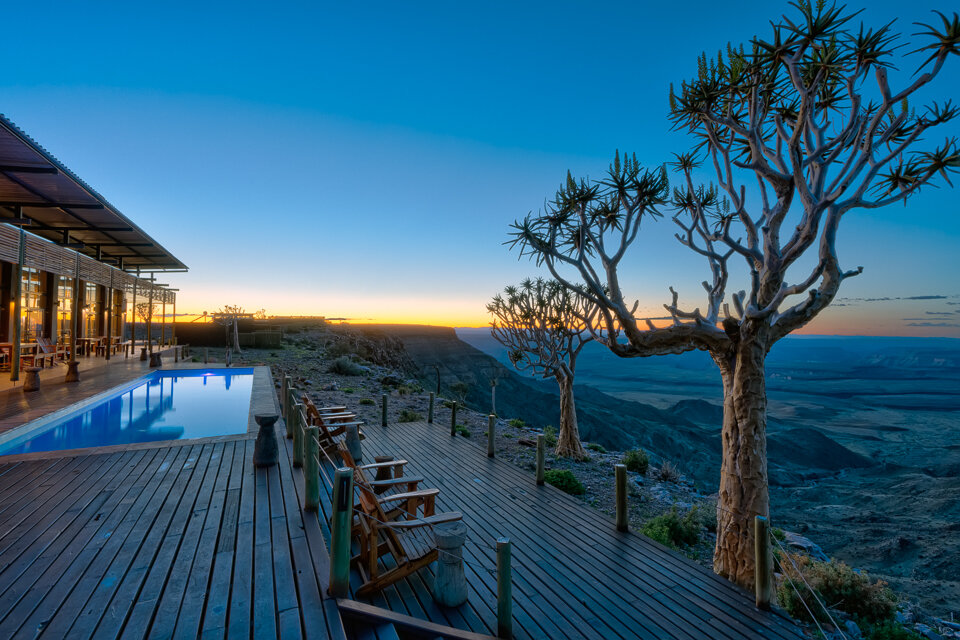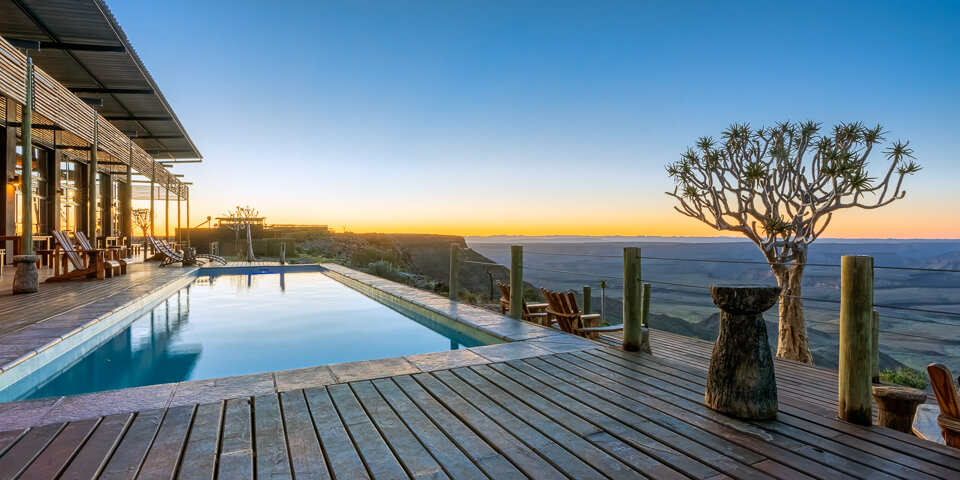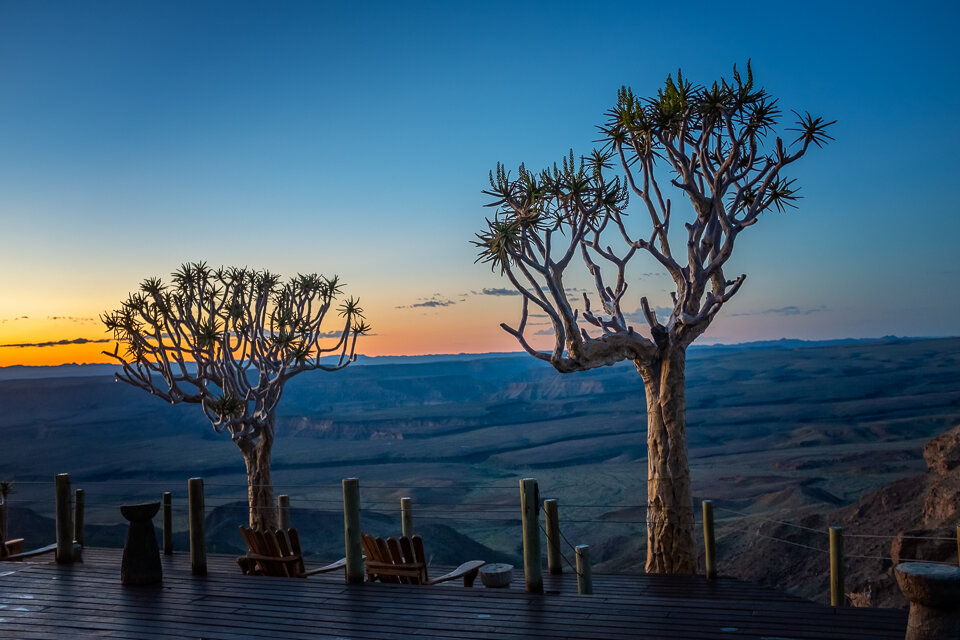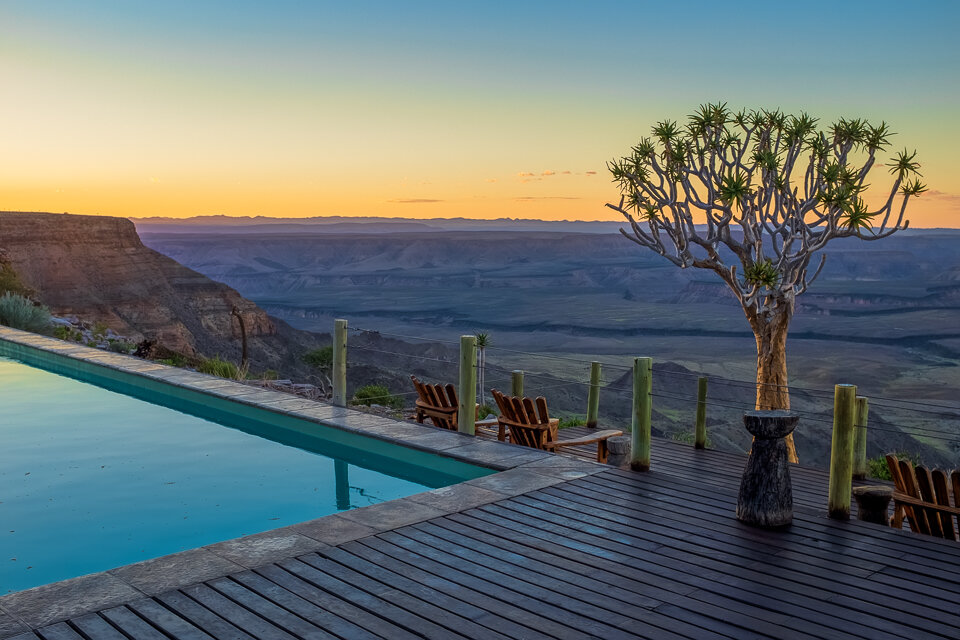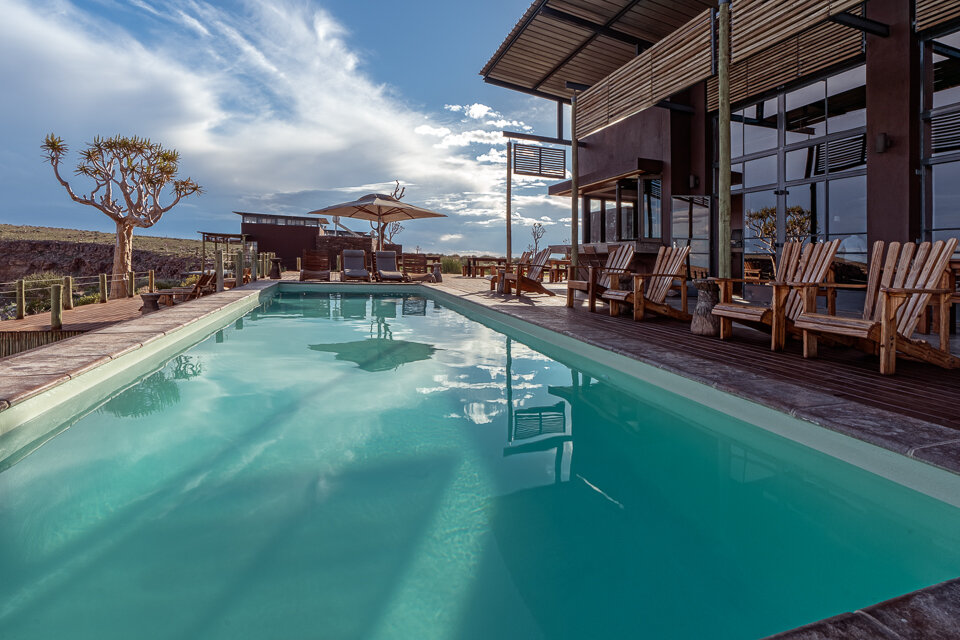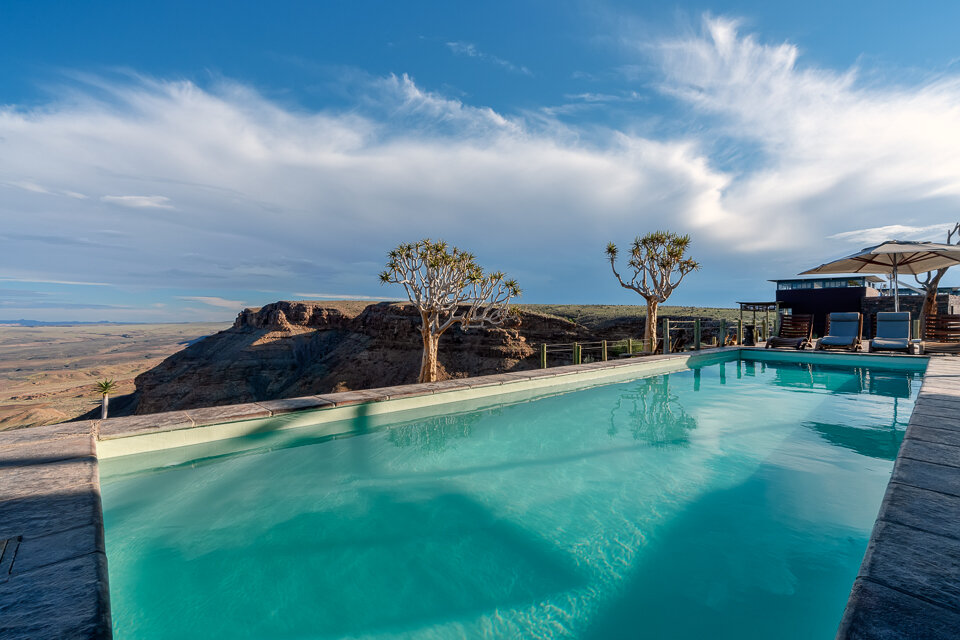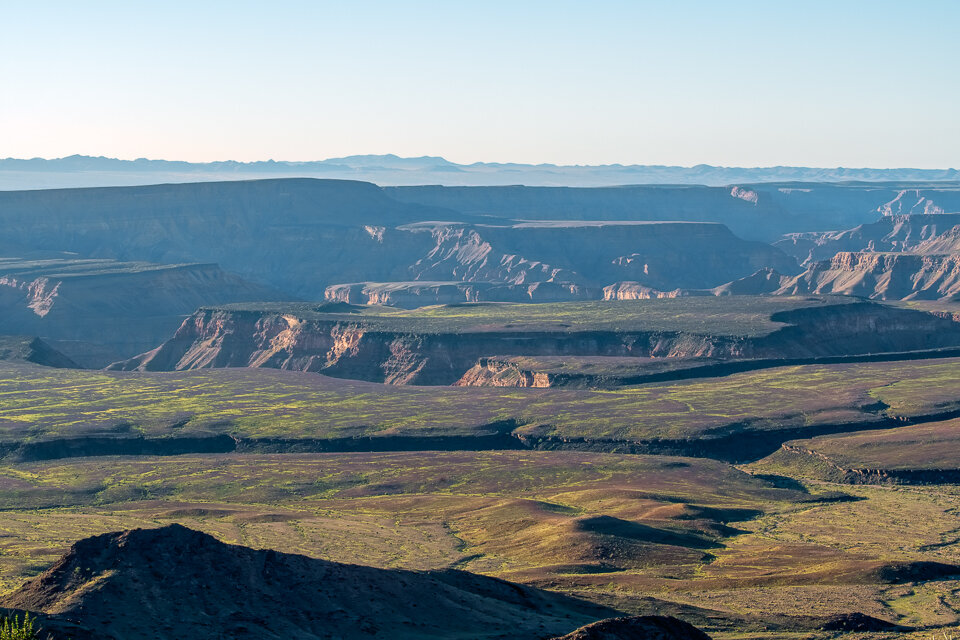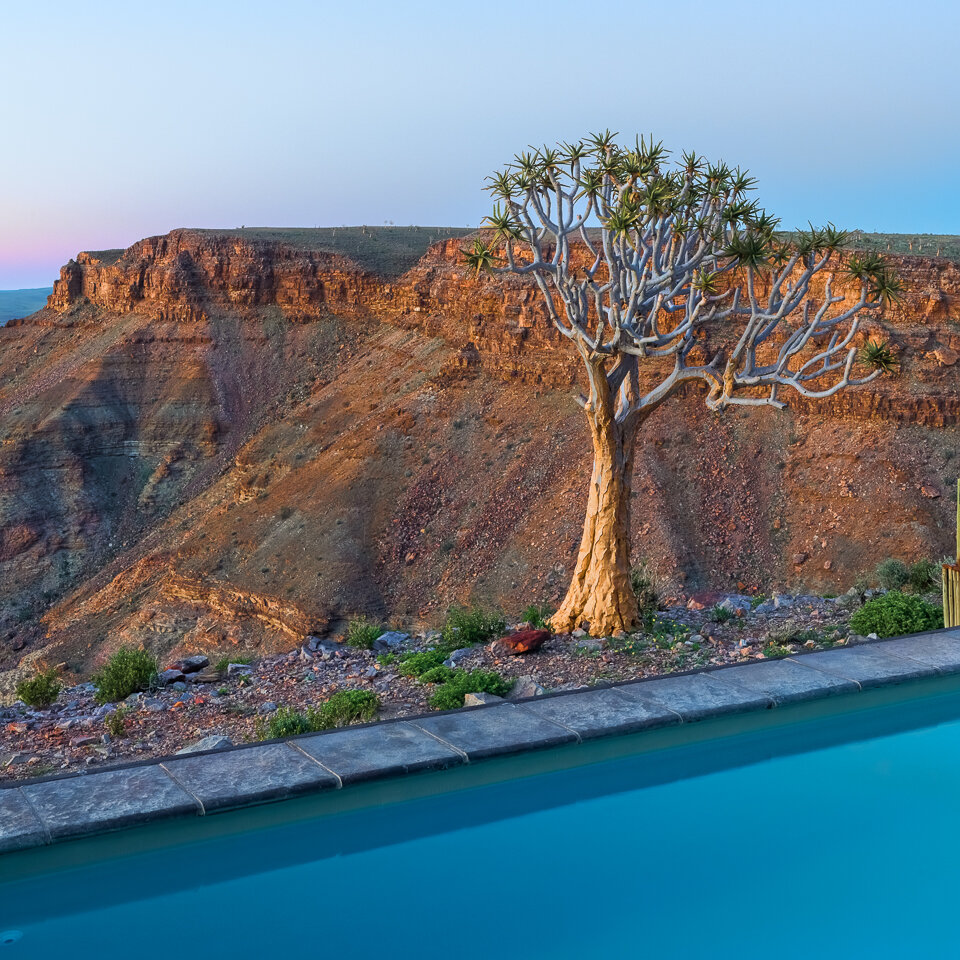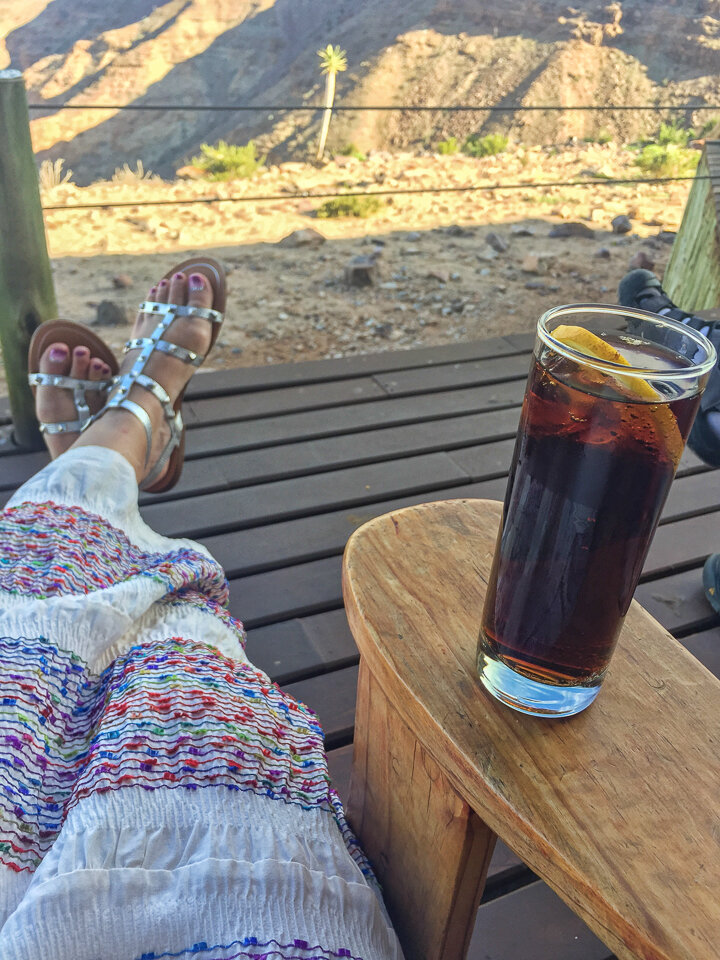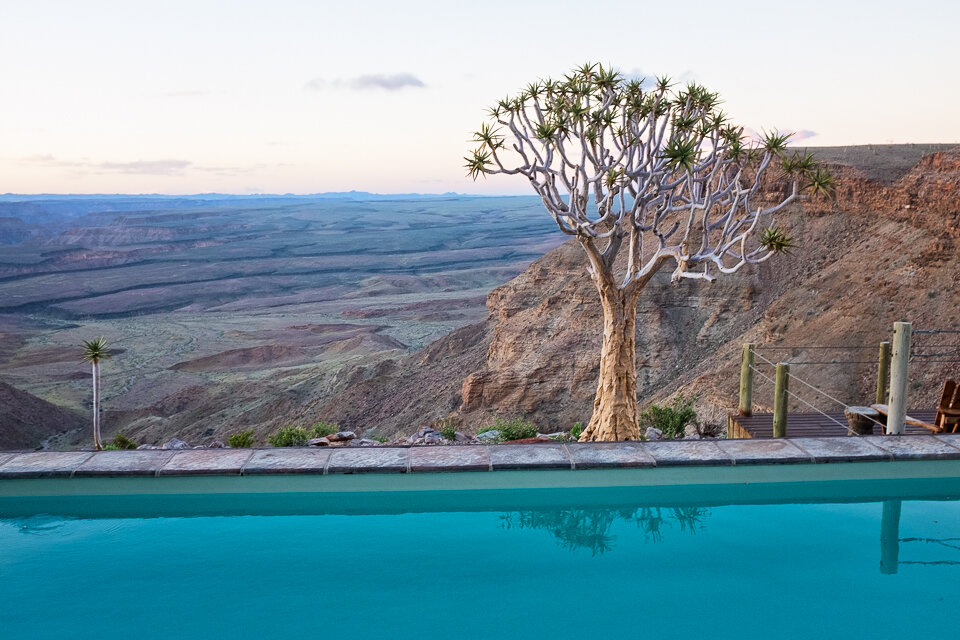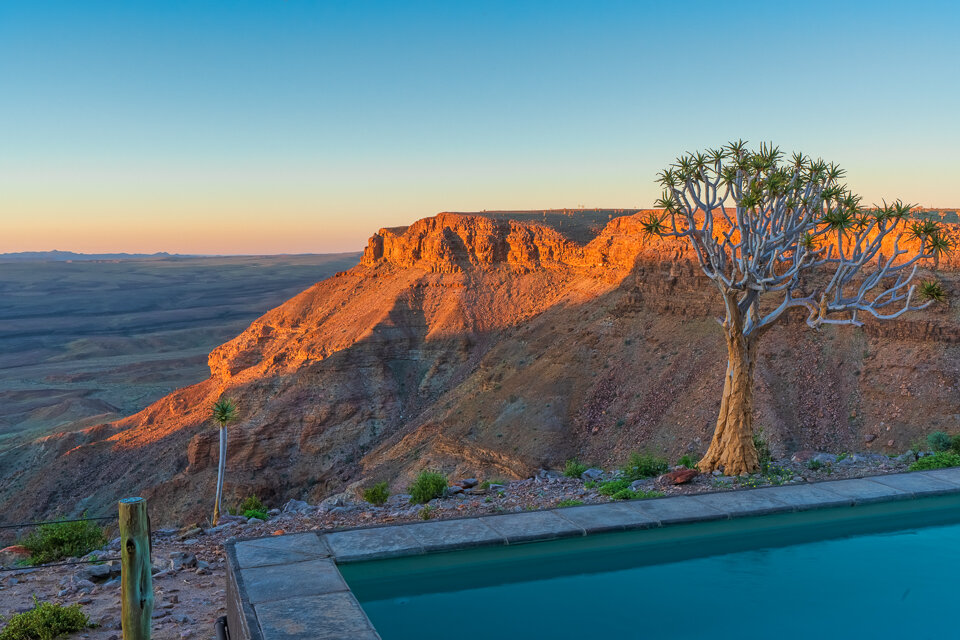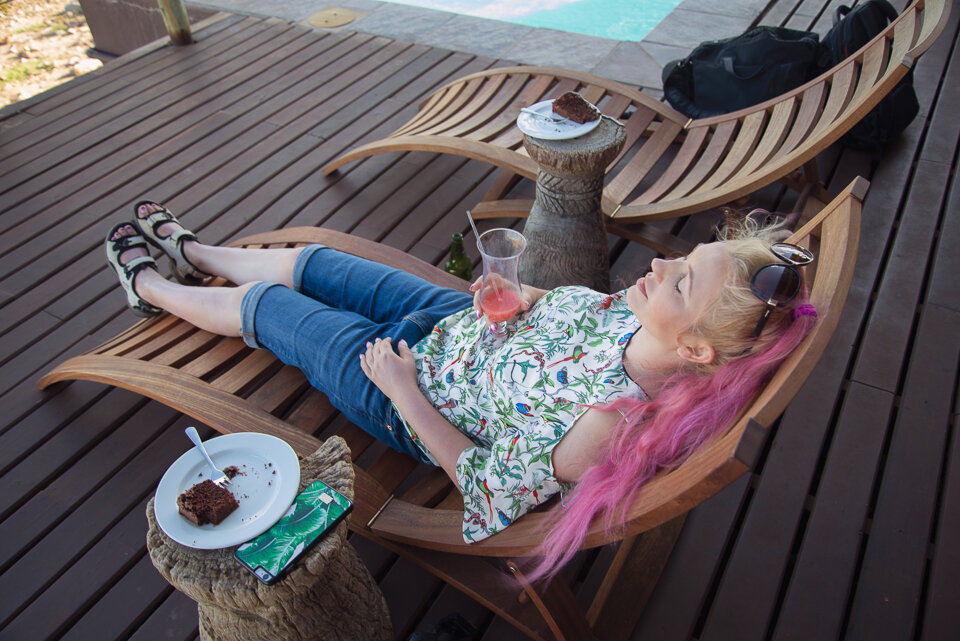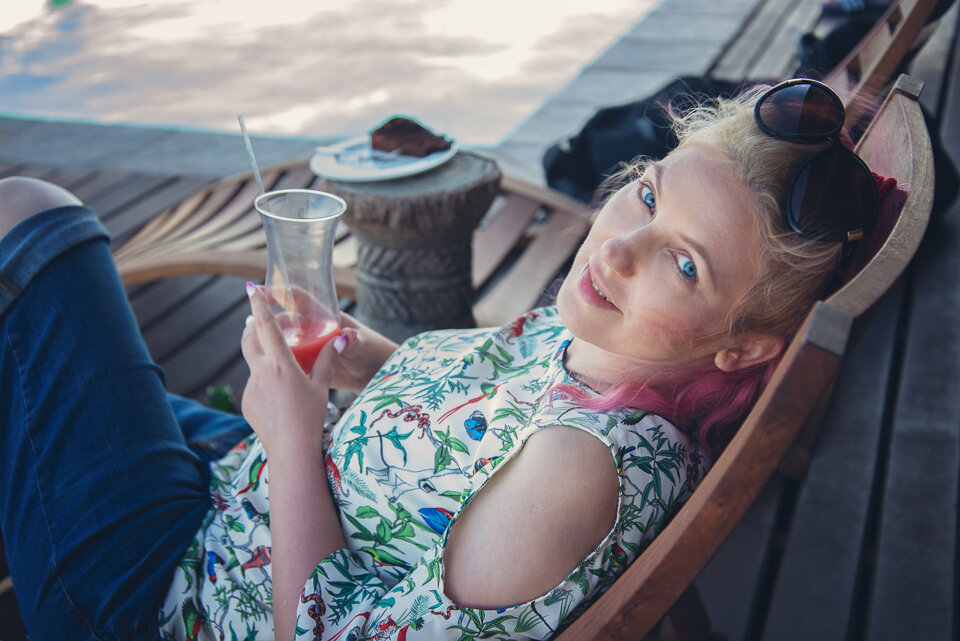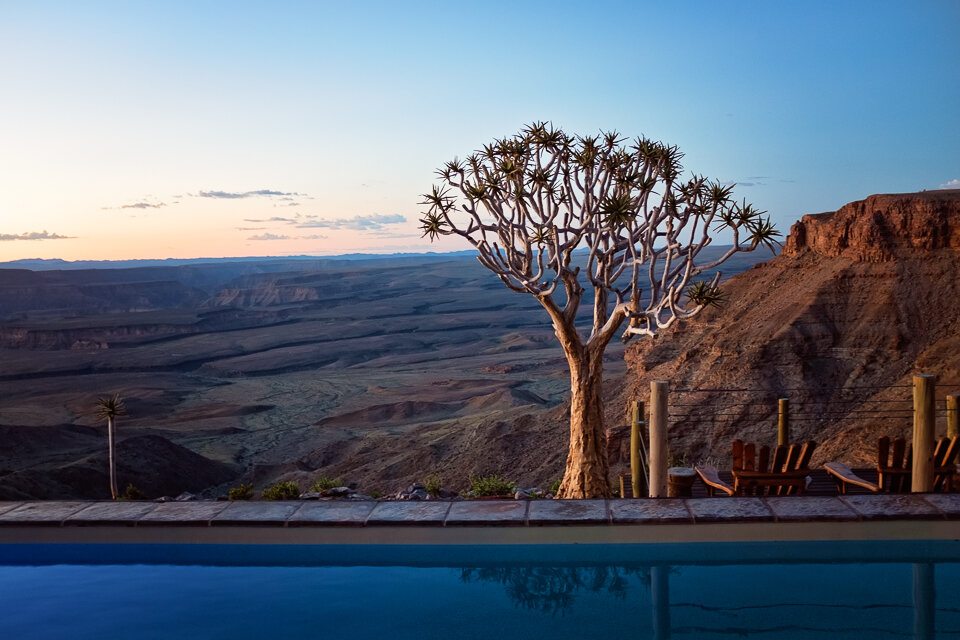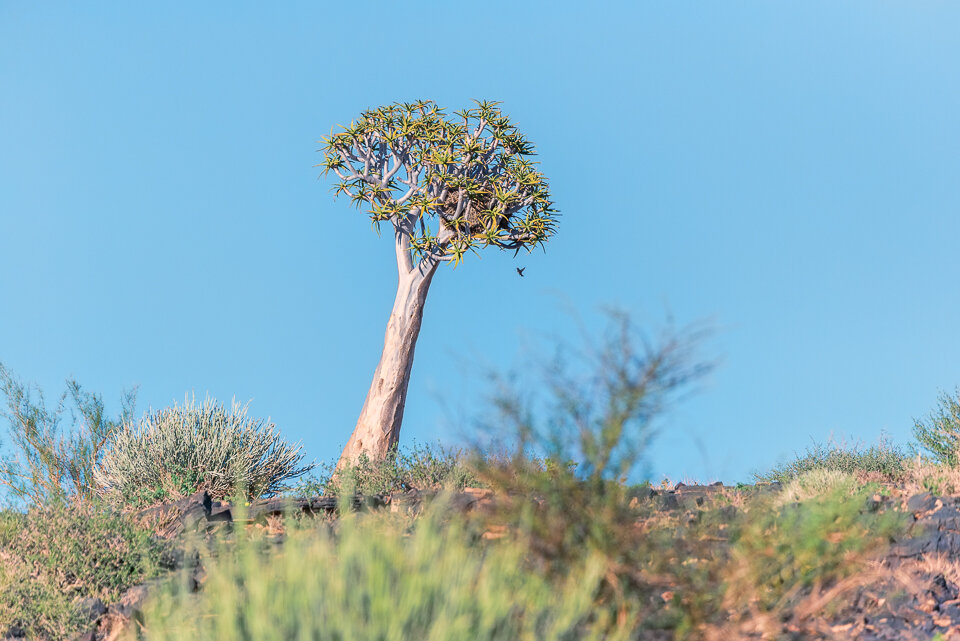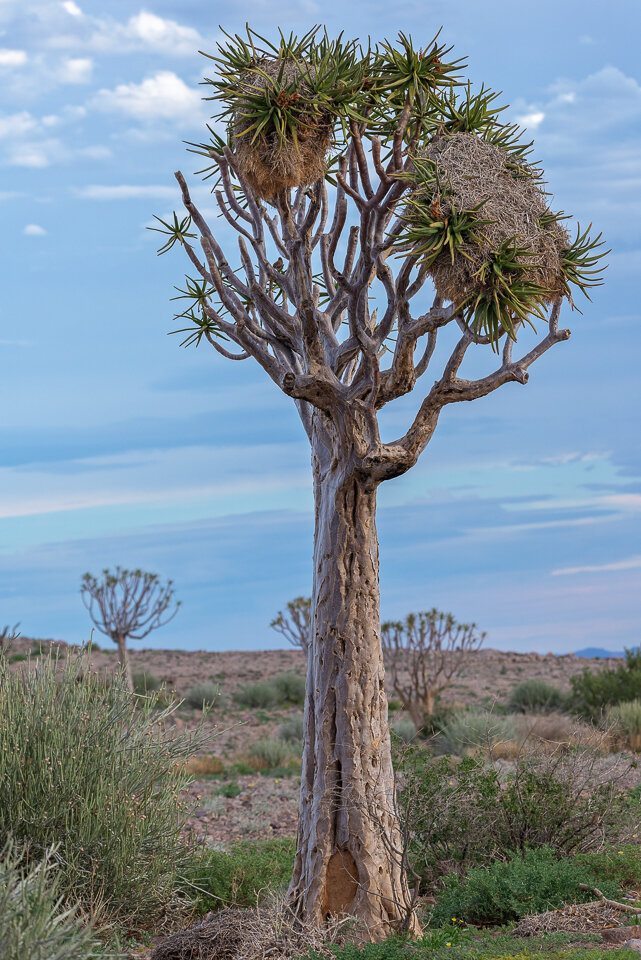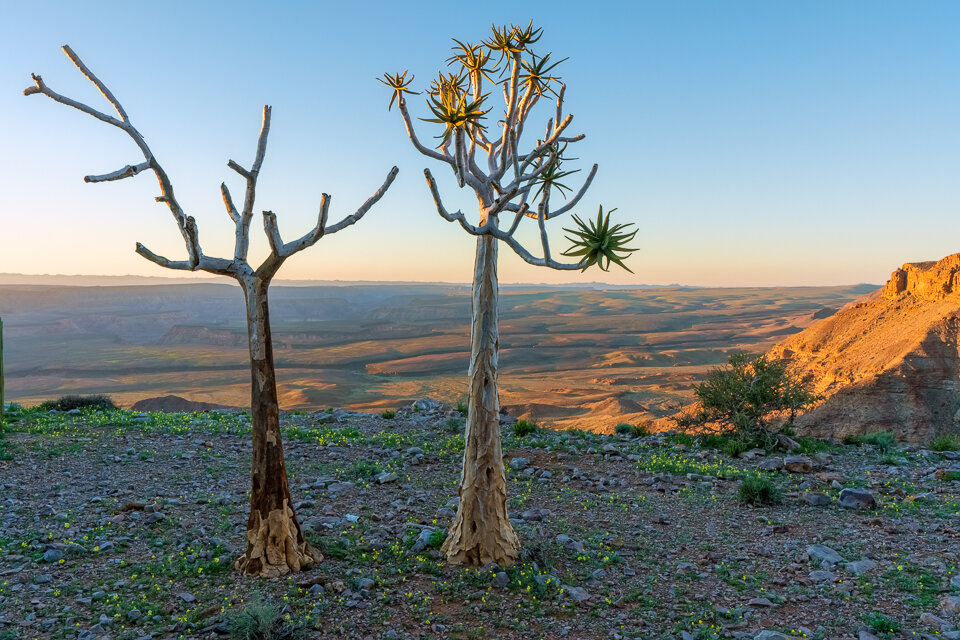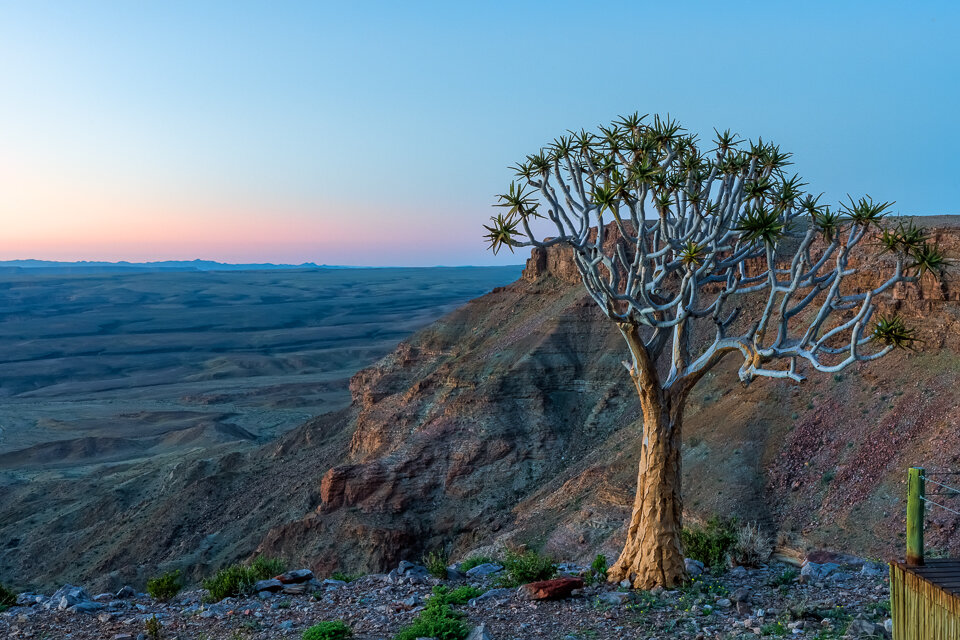Greeting committee of horses is not waiting for us on this occasion but very close to the gate of the reserve we meet for the first time karoo bustards (or if you prefer korhan karoo). Heads, necks and breasts of these lovely birds are grey-brown, and they have black chins and throats but edged in white. The belly is pinkish white, and the wings are brown. The female is similar to the male but has less black on the throat.
And you know that they are around when you think you can hear…frogs. They are vocal in the morning and late afternoon and to my ears they sound much more like frogs than like birds. So I will quickly learn than certain sounds do not mean the pond is around, but rather that I should look around for the bustards. Korhan Karoo lives in a range of arid habitats associated with the karoo (semi-desert region of south Africa).
Komitet powitalny dzikich koni co prawda na nas nie czeka, ale zaraz przy bramie do rezerwatu spotykamy po raz pierwszy ptaki z rodziny dropi (korhan karoo). Ich głowy,szyje i piersi są szaro-brązowe, ale najłatwiej je rozpoznać po tym, że mają czarne podbródki i gardła z białymi krawędziami. Brzuch jest różowobiały, a skrzydła brązowe. Samica jest podobna do samca, ale ma mniej czarnego na gardle.
Po czym poznać, że dropie są w pobliżu? Po… rechocie żaby. Ptaki te są dość wokalnie, zwłaszcza rano i późnym popołudniem, a dla moich uszu brzmią mnaprawdę bardziej jak żaby niż ptaki. Szybko się więc nauczę, że niektóre dźwięki nie oznaczają, że staw jest w pobliżu, ale racze, że warto się rozejrzeć się za dropiami. Korhan Karoo żyje w szeregu suchych siedlisk związanych z obszarami karoo(półpustynny region Afryki Południowej).















